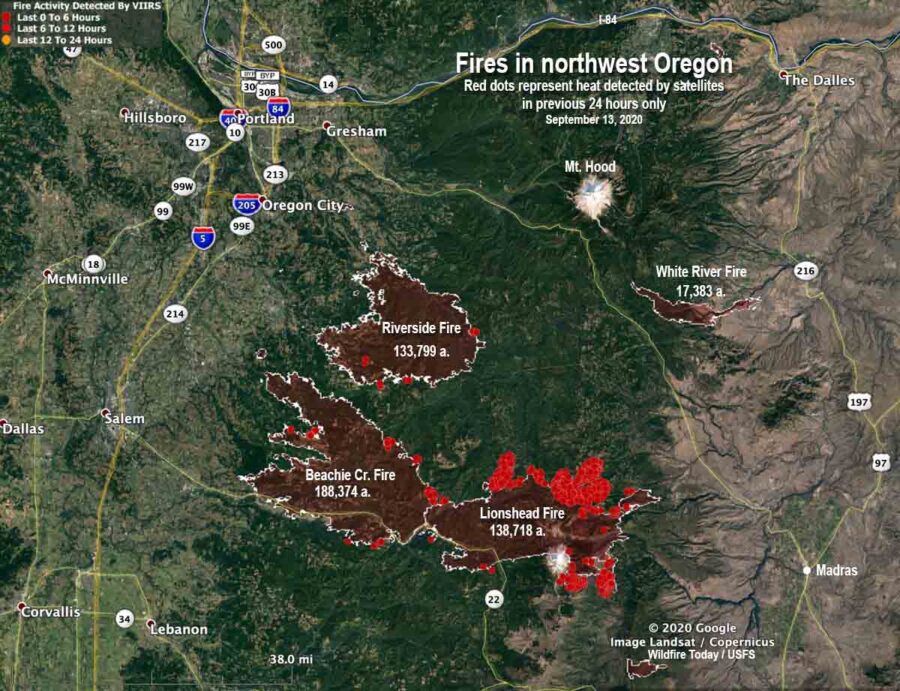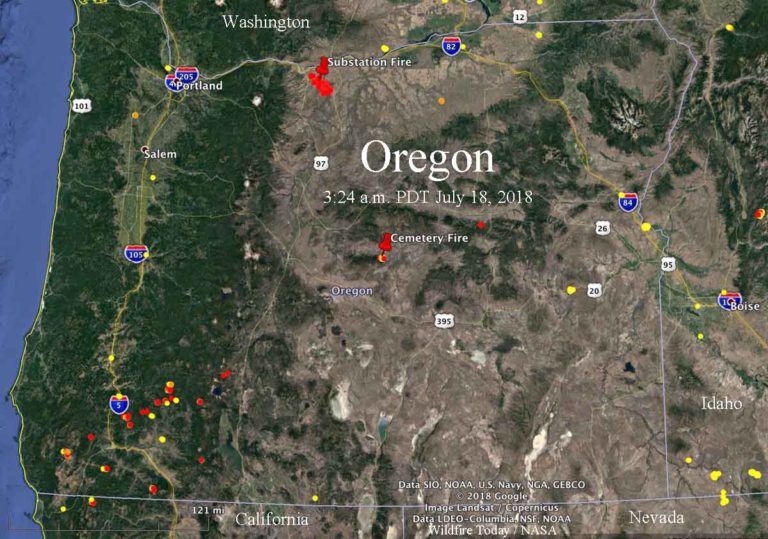

“Human-caused fires are preventable.” People can cause wildfires in numerous ways - flicking a cigarette butt onto the ground, leaving a smoldering campfire, burning debris out of season, even driving through tall brush, to name a few. “While the explanation for this change is unknown, one thing is clear,” Forest Service officials said in the statement. Much of southeastern Oregon hadn’t seen noticeable precipitation in over a month. As of July 26, large swaths of central and eastern Washington, as well as the majority of Oregon, had gone weeks, if not over a month, without at least a tenth of an inch of rain. The Washington Department of Ecology declared drought emergencies in parts of 12 counties late last month. Much of Oregon and Washington is currently experiencing moderate to severe drought, exacerbating the fire danger. A wet spring gave way to a hot summer, grasses and other fine fuels flourished, and now, they’re “well-cured and ready to go,” Bailey said. And today it’s spilling over the dam and doing tremendous damage downstream.”ĭry forests and grasslands certainly don’t help. “That fuel buildup is rising like water behind a dam,” Johnston said. Today’s hotter and drier conditions are priming those fuels, making them more combustible. For a hundred years, fire suppression policies prevented necessary fires from occurring in the West, creating a buildup of fuel. And, according to James Johnston, a fire ecologist at Oregon State University, “There’s clearly an increase in alarming behavior by people in the woods.”īut “the perfect storm of bad decisions,” Johnston said, is making matters worse. “There are more of us, and more of us out there,” said John Bailey, a professor of silviculture and fire management at Oregon State University.
Washington and oregon fire map plus#
The rise in outdoor recreation, plus the growing presence of campers on public lands, means that there are more people in the woods.

So what’s causing the increase? While no research or data yet exists, experts have some ideas. A “large fire” is one that damages over 100 acres in timber or 300 acres in grassland, or requires an Incident Management Team, a group that’s dispatched to deal with complex incidents. Several large fires in the Northwest, including the Eagle Bluff and West Hallett fires in Washington and the Grade, Bedrock, Golden and Corbie fires in Oregon, are all listed as having undetermined causes by the Northwest Interagency Coordination Center as of early August. That fire destroyed over 43 homes and damaged a fiber-optic line, resulting in the loss of 911, phone and internet service for over 8,000 people in a neighboring county. And though fire investigations can take weeks, the Klamath County Sheriff’s Office already said in a press release that humans are also believed to be responsible for the Golden Fire in the southern part of the state. The Flat Fire, which has burned over 27,000 acres, started near a campground in the Rogue-Siskiyou National Forest and is listed as human-caused. The Forest Service said this “significant uptick” in human-caused fires strains firefighting resources, especially if and when other lightning-driven wildfires occur.

This year, there have been 197 over the same time span. By the end of July 2022, there were 86 human-caused or undetermined-caused fire starts on national forest lands, officials said in a statement on July 28. So far this summer, Washington and Oregon have seen a “huge increase” in the number of wildfires caused by humans, according to the Forest Service.


 0 kommentar(er)
0 kommentar(er)
